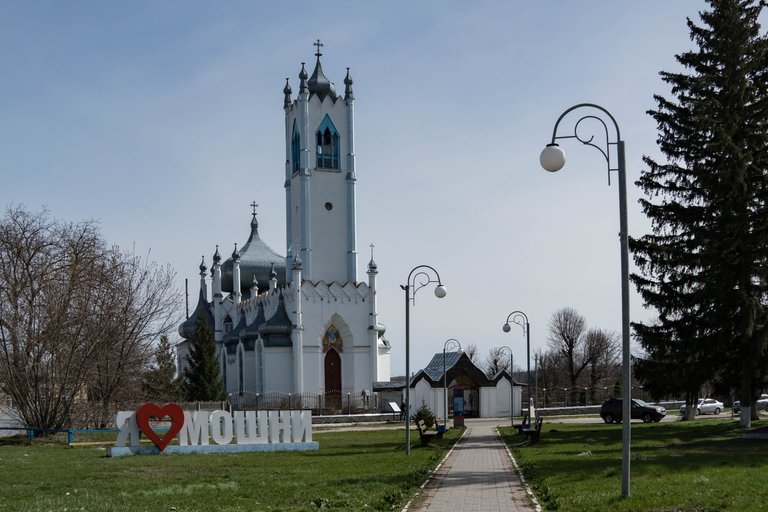
I thought I knew the tourist attractions of Ukraine quite well. Over the past 10 years, I have visited many famous and little-known places during guided tours or solo travels. Many remain on the "to visit" list. But if you'd asked me what I know about Moshny 2 weeks ago I'd just shrugged my shoulders.
Moshny appeared in my itinerary by accident. In fact, I was going to see an old windmill built in 1902 by a local peasant in the likeness of Dutch windmills. As it was not close, I started looking for other landmarks and attractions along the route. This is how I found this town in my "Saved" places on Google Maps. The funny thing is that I didn't make it to the windmill on that day but I was totally fascinated by this small town-museum.
Moshny, Cherkasy region
Moshny has the administrative status of a village but it is immediately noticeable that this is not an ordinary small village. There are 10 historical landmarks here, not every town has so many:
- Doctor's House (architect Gorodetsky)
- Hospital (architect Gorodetsky)
- Savior and Transfiguration Church (architect Giorgio Torricelli)
- Catholic Church of the Nativity of the Virgin Mary
- The house where Taras Shevchenko stayed
- The building of the Volost council and court
- The boarding house of young noble ladies
- The Office of the Volost
- Market Square
- The building of Volost bank
A few more did not survive the bolshevik's and fascist regime, but there are old pictures and stories about an amazingly beautiful palace, a fascinating church on the hill, and a tower that rose to the clouds...
When walking around and being amazed by the unusual beauty I kept asking myself why I didn't see them on the list of guided tourist routes. Why does a place with huge tourist potential remain little known and little visited?
Anyway, things began to change. In February 2024, the project to preserve the cultural heritage of the village during the war was completed. The objects were digitized and 3D model of each created, a banner with descriptions in English and Ukrainian and in Braille was installed near each of them.
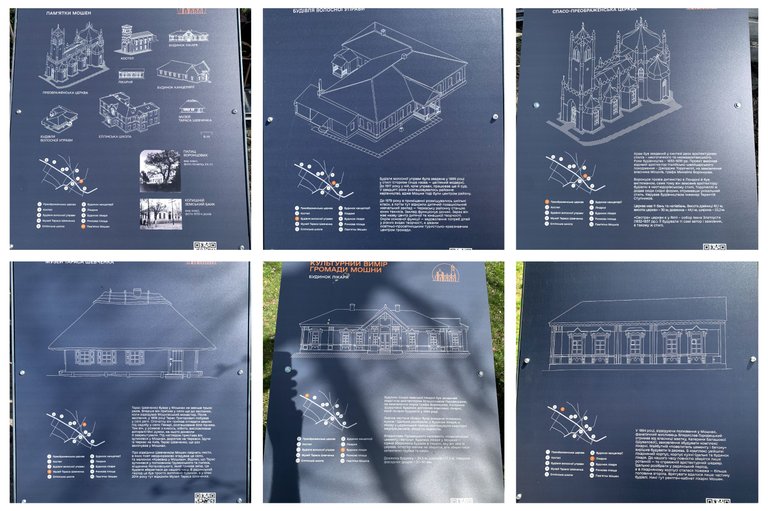
The main residence of Count Vorontsov
The city received Magdeburg law in 1592. In 1819, the town became the wedding dowry of Elizaveta Branytska, the daughter of the owners of these lands, the descendant of Grigory Potemkin and the future wife of Count Vorontsov.
Vorontsov was fascinated by the place and launched a grand construction. Everyone in the former USSR heard about Vorontsov's palace in Alupka (it is in Crimea temporarily occupied by Russia). That palace was a shadow of what Vorontsov had built amid the wild nature of hills, woods and swamps in Moshny. An English park was laid around the palace. The entire territory was 27 km long. At that time it was the largest park in Europe. There were 56 avenues only for horseback walks! The swamps were drained, and bridges and gazebos appeared in the park. And the highest point of the ridge was decorated with the 58-meter Svyatoslav tower. Locals called it a "Forestighthouse". From its top, Vorontsov admired the surrounding landscape. According to contemporaries, the Great Lavra bell tower could be seen from the tower through the viewing tube in clear weather.
Doctor's House
There is probably no person in Kyiv (at least) who doesn't know the name of Wladyslaw Horodecky (1863-1930), the famous architect from the family of a Polish nobleman who lived in Kyiv for almost 30 years. Horodetsky constructed buildings according to his own projects, and also carried out technical supervision. He was an architect of the city of Kyiv, the owner of a cement factory and built most his orders exclusively from his own concrete, which was an advanced technology at that time.
But the building in Moshny is completely wooden, built by the Lord of Concrete Horodecky 🙂 in the old Rus style in 1905, the only one preserved in Ukraine.
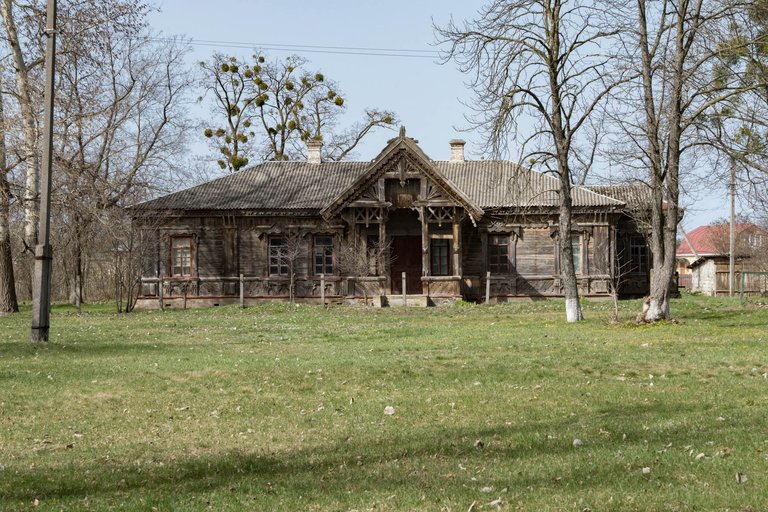

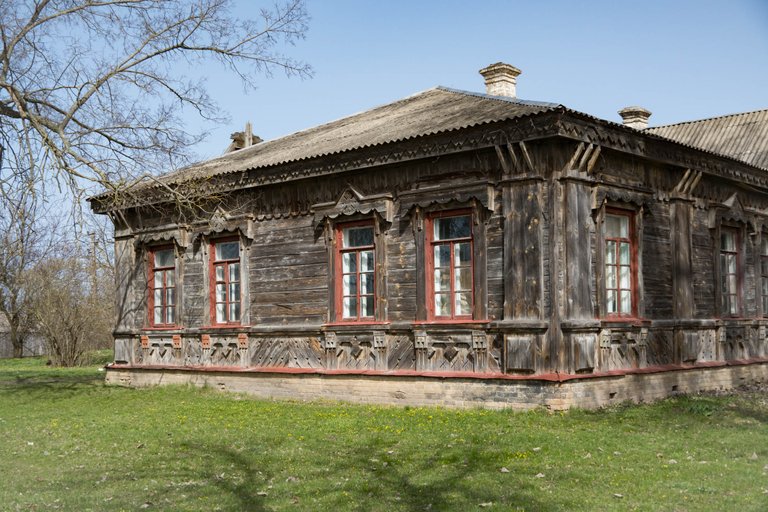



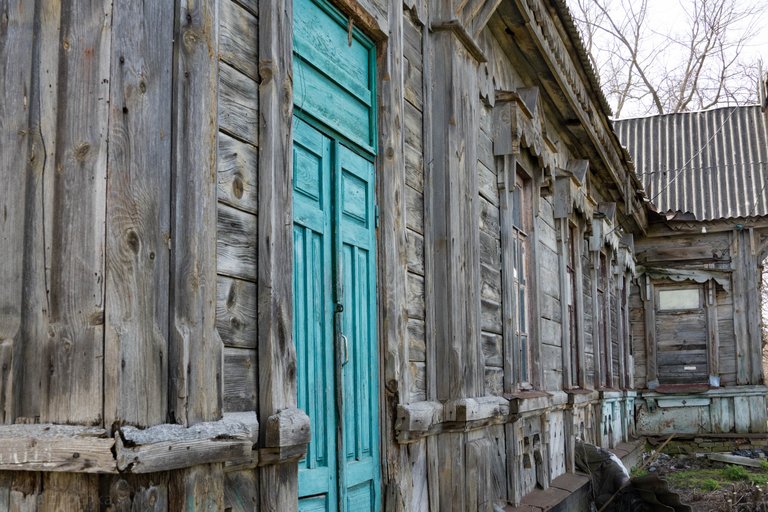
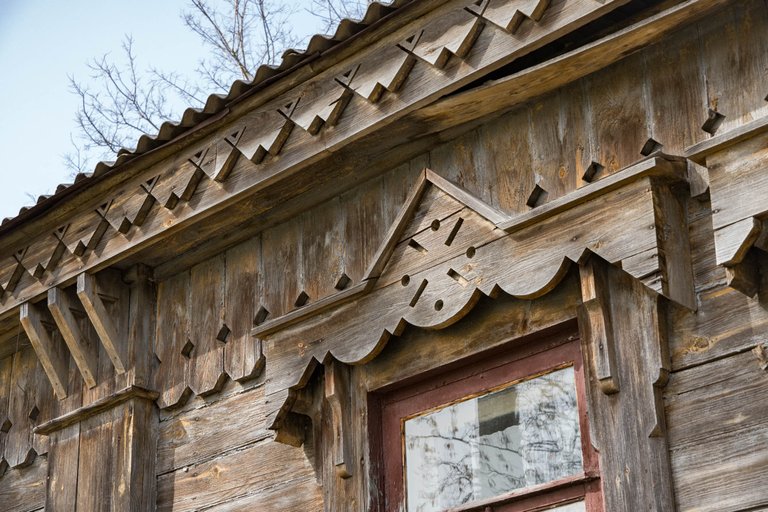
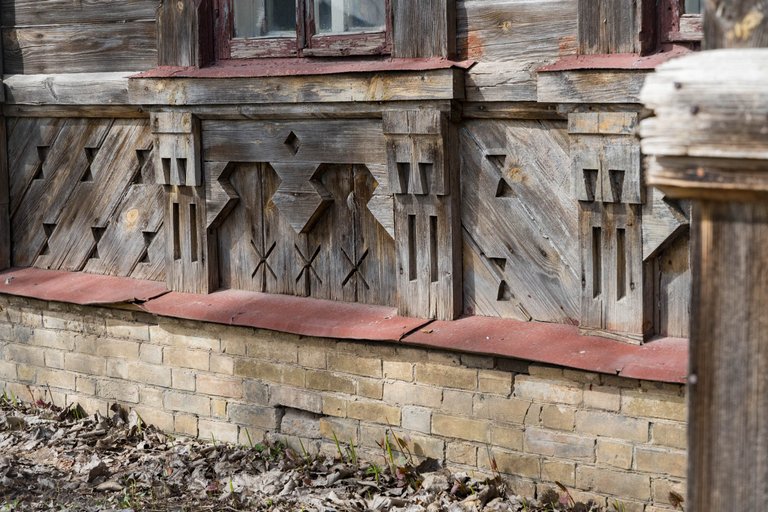
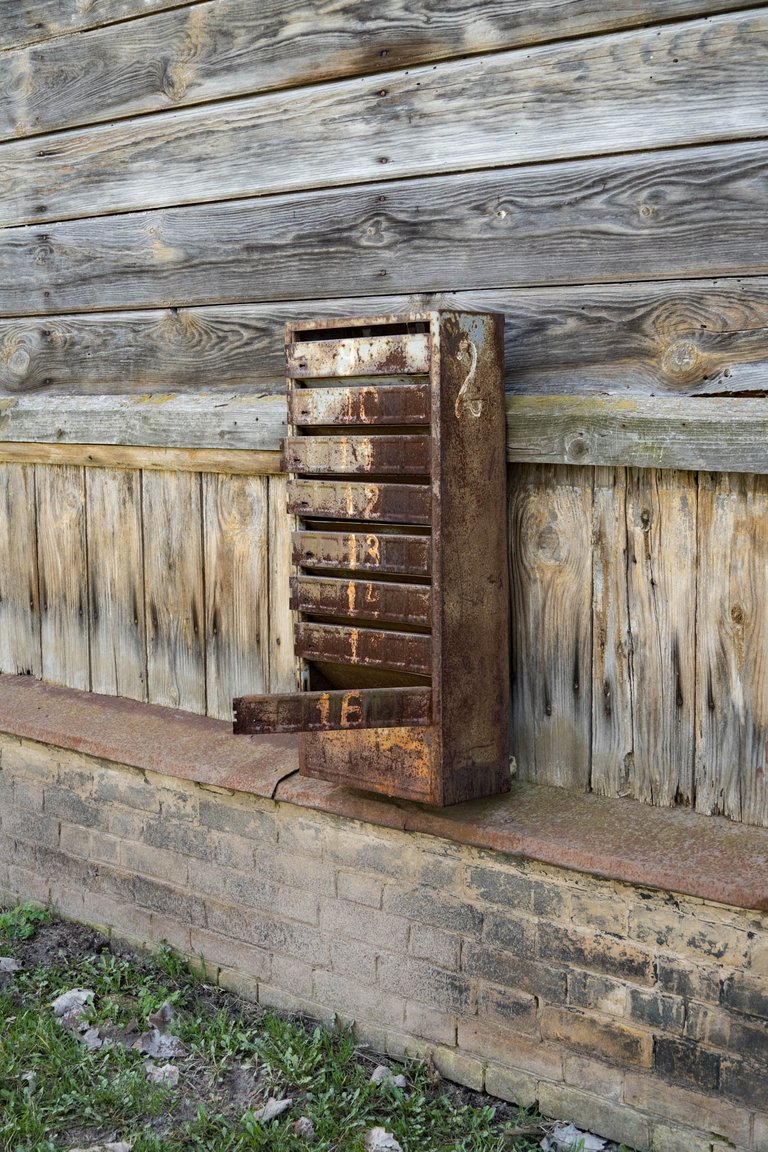
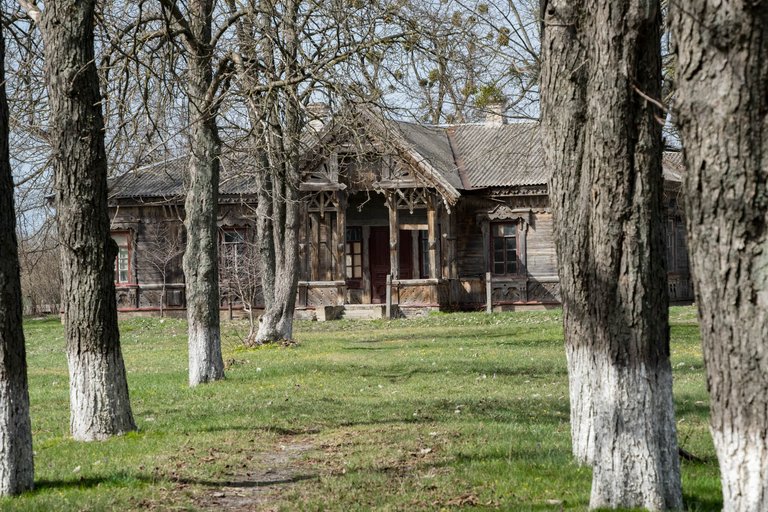
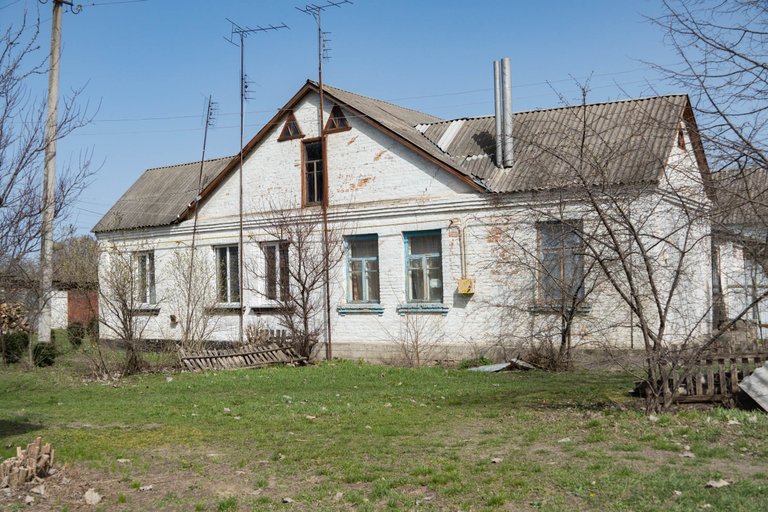
The manor is called "Doctor's House". It was a part of Zemsky Hospital. Its complex included a hospital, a doctor's house, and a laundry. This white building is the next after the Doctor's House. It attracted me by the unusual triangular windows on the first floor. Maybe it was a laundry, who knows...
The hospital complex was an order of the granddaughter of Count Vorontsov, Kateryna Shuvalova. Kateryna had large hunting grounds, and Horodetsky was an avid hunter, so they knew each other. When Kateryna commissioned Horodetsky for this complex, he was not yet a famous architect, and this was a kind of experiment.
The Hospital
The first two buildings of the hospital's complex decorated with carvings were opened in 1894. The hospital had a doctor's office, an operating room, a pharmacy and, of course, a kitchen. It could accommodate 10 patients.
Unfortunately, most of it was destroyed in a fire. This is all that has survived.

The carving is simply incredible.
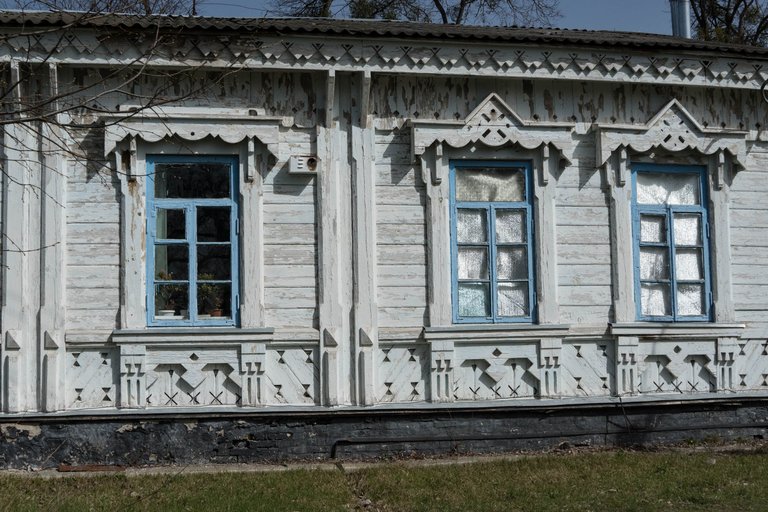
Transfiguration Church
The first object I learned about was Horodetsky's wooden house. But the most recognizable highlight is this amazing church. It is difficult to define its style, but the local peasants of that time had undoubtedly never seen anything like it before.
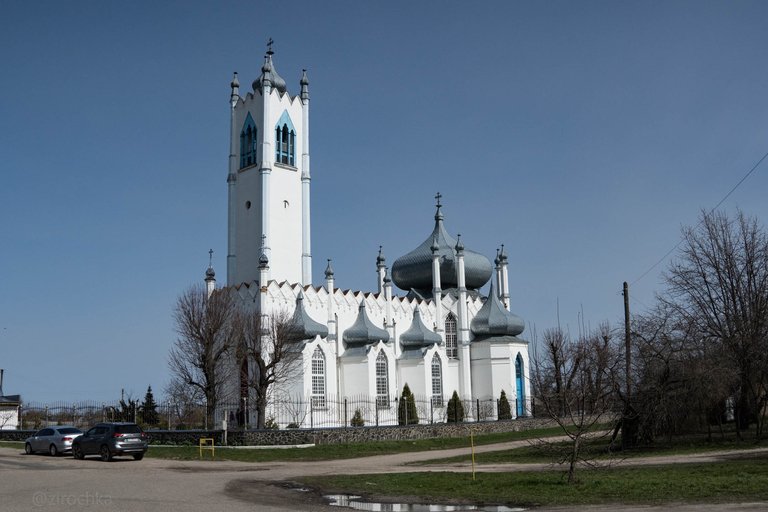
They say that it is Tudor Gothic combined with a romantic style. The one thing is certain - it is completely uncharacteristic for Orthodox churches.
It was built by order of Vorontsov by the architect Giorgio Torricelli in 1843. Onion-shaped domes and minarets add an oriental flavor. 100% WOW effect.
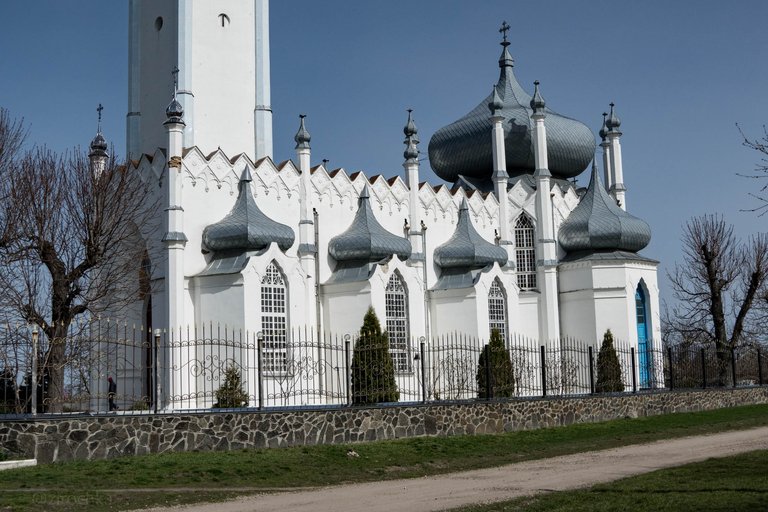
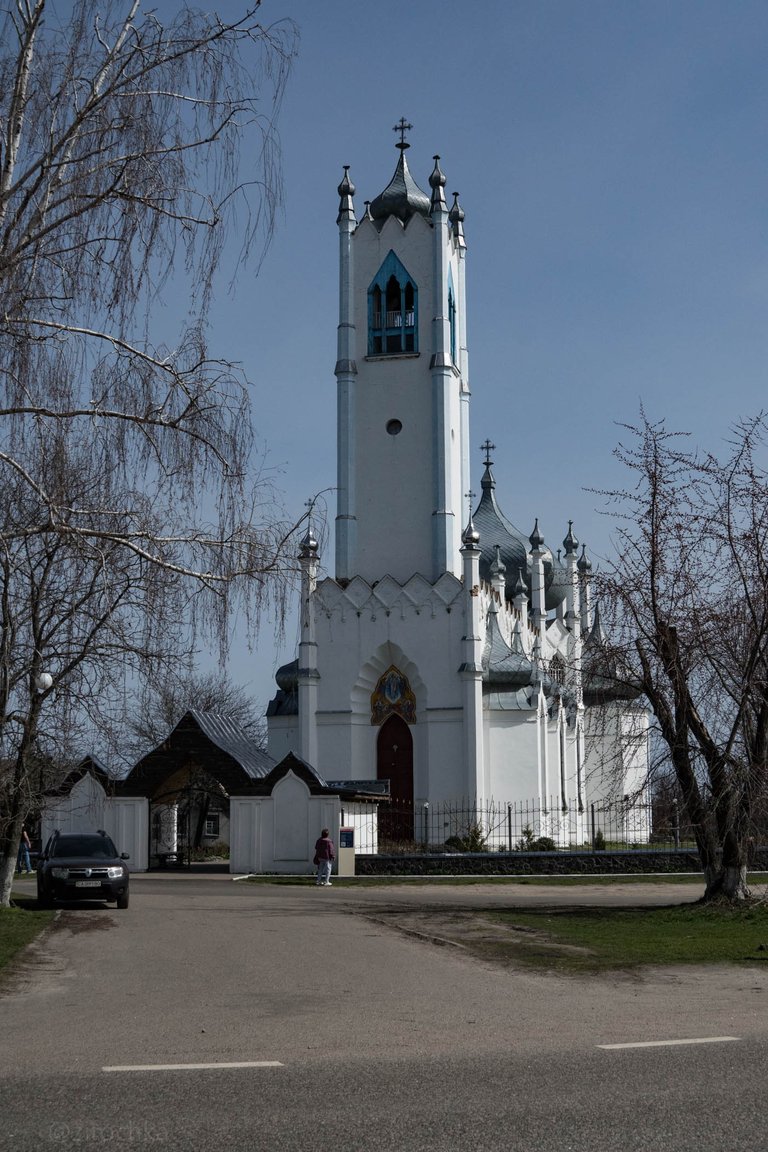
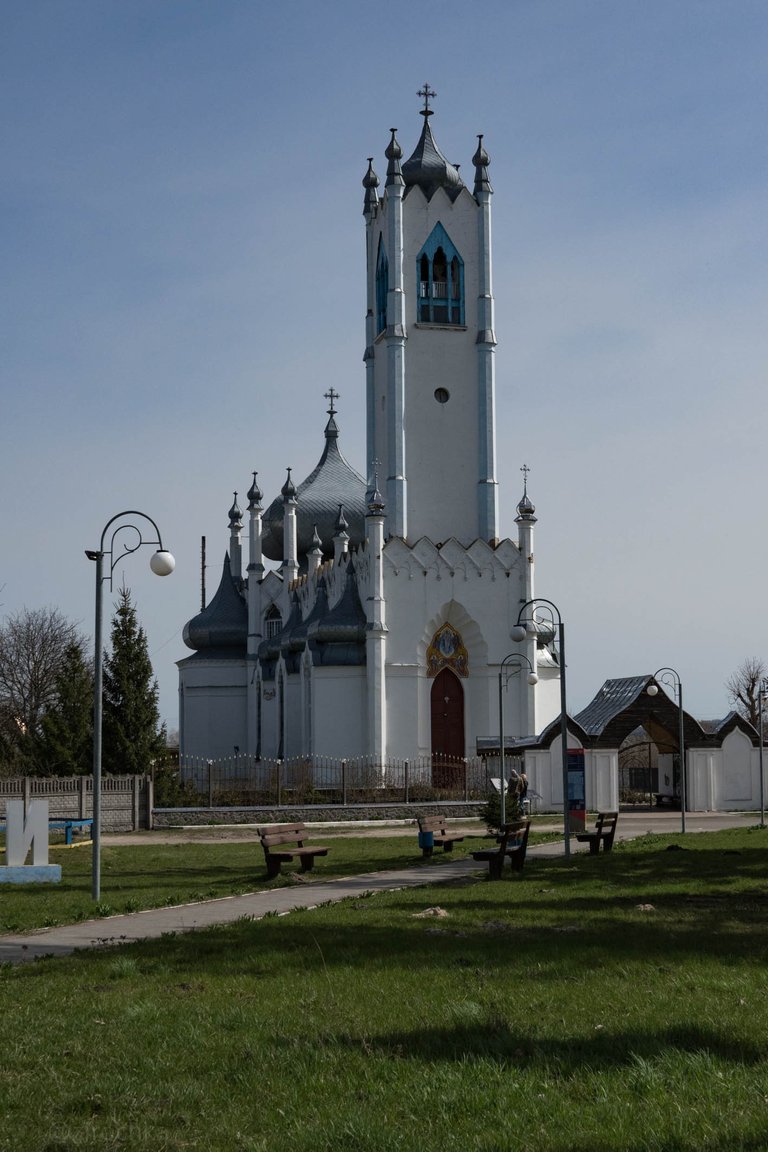
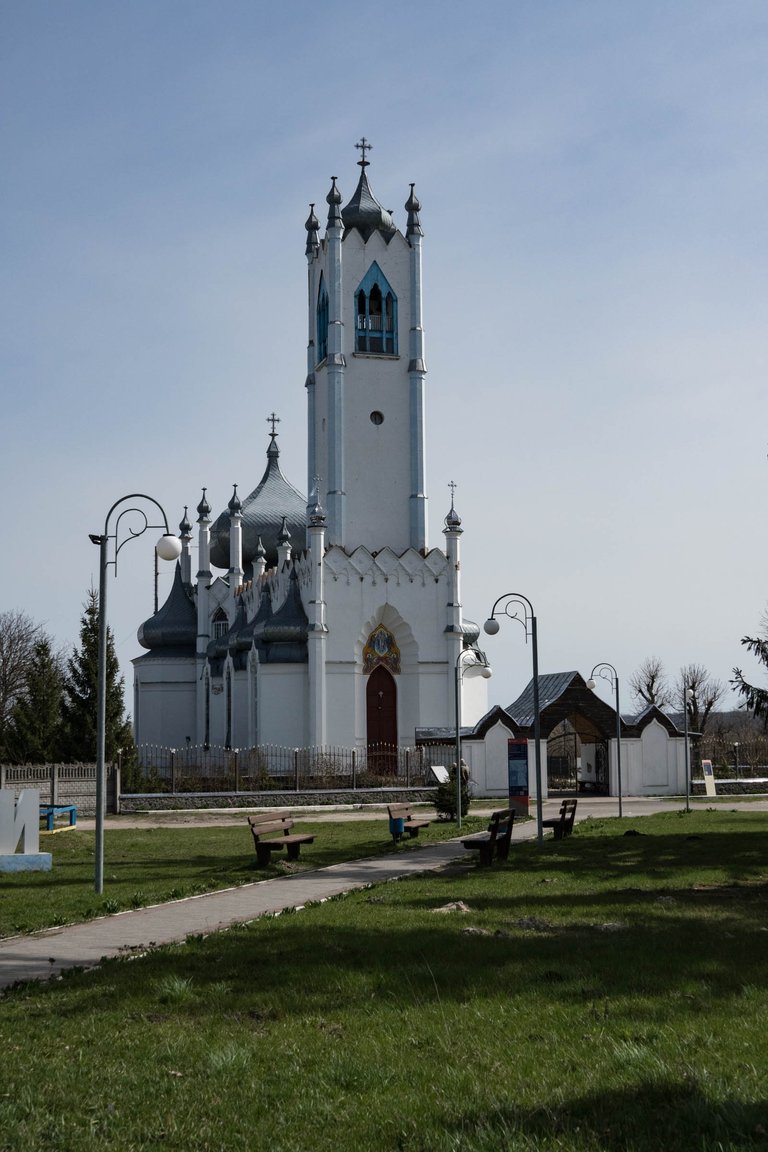
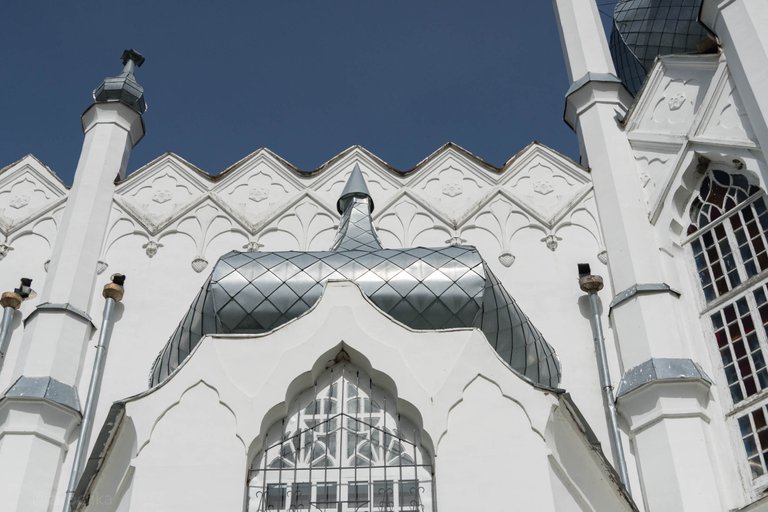
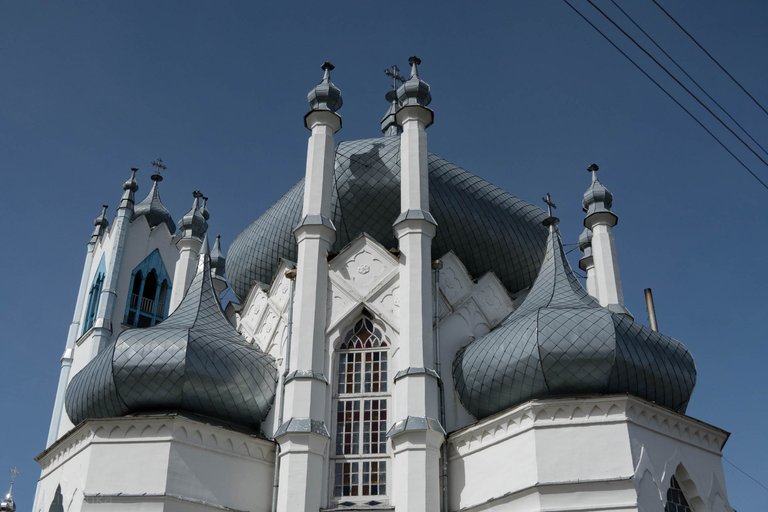
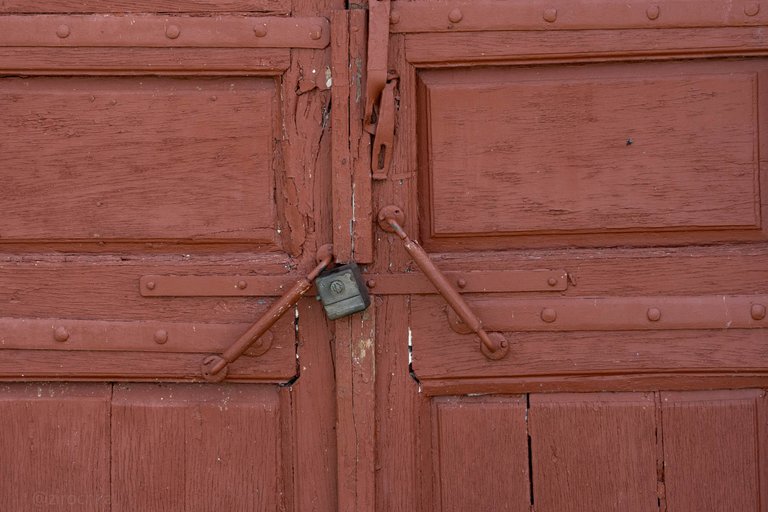
Amazing building but closed. Unfortunately.
"The younger sister" of this church (1832-1837) is in Yalta (occupied Crimea). Its author and customer and style are the same, but its dimensions (except for the bell tower) are much smaller.
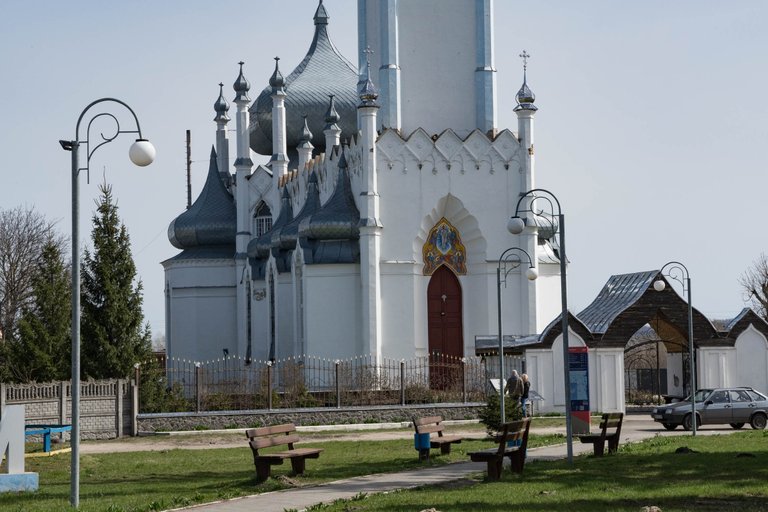
Catholic Church of the Nativity of the Virgin Mary
Frankly speaking, the fate of this construction is a shame. It built in 1857 for the Polish population of the town by order of the above-mentioned Elizaveta Vorontsova. The style of the building is Neo-Romanesque with elements of the Italian Neo-Renaissance, the only building of this style in Ukraine. It deserves a better treatment.
In 1920, the temple was closed. The Bolsheviks first painted over the frescoes and then tore them to shreds with hoes. Workshops were made on the ground floor, and "Lenin's room" above. After WW II it was turned into an agricultural enterprise. They made some ugly "improvements". The belfry was a water tower for a long time. The water from the reservoir caused the damage and it is now in a very poor state. The building is privately owned by an agricultural enterprise, which does not use it, but also does not preserve it.

The building of the Volost Council and Court
Unlike the previous one, the village community can be proud of the condition of this facility. This style is historicism and in fact it is a collection or combination of styles of previous eras but reinterpreted.
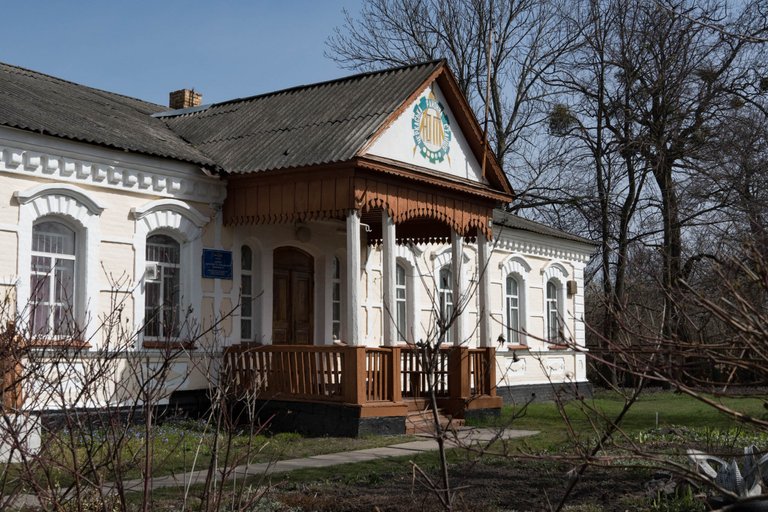
The building of the administration was erected in 1899. Later, the district authorities were located here, and then the school. Now there is a Center for Children's Art.
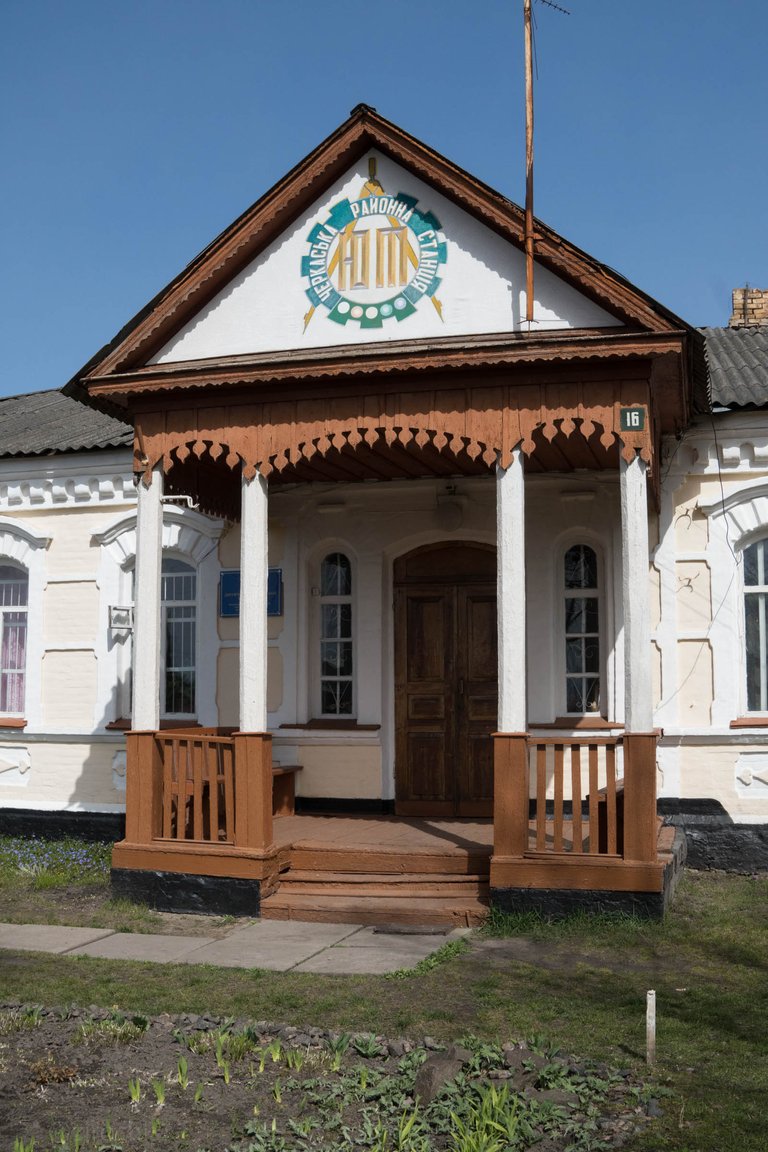
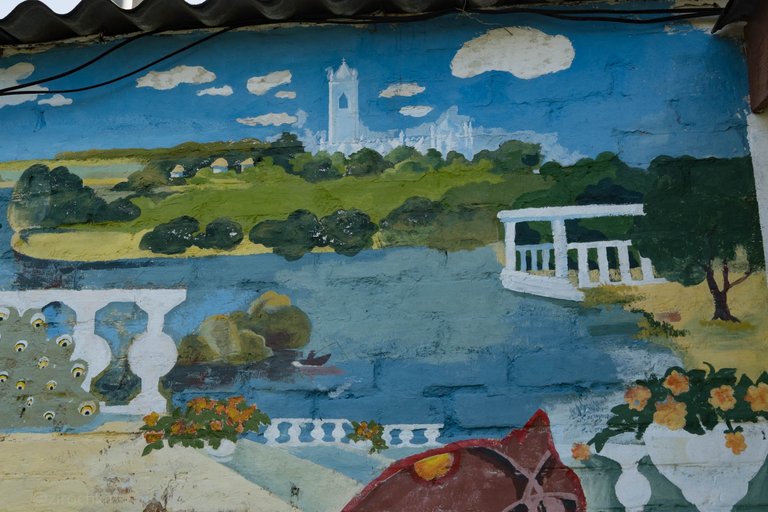
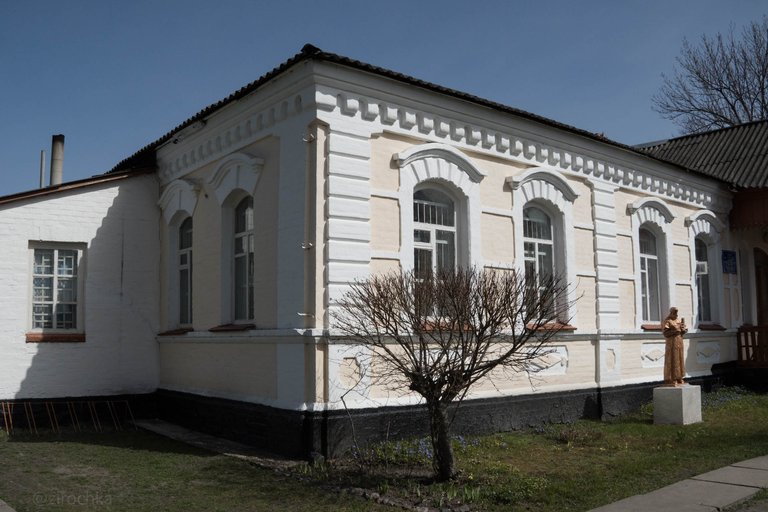
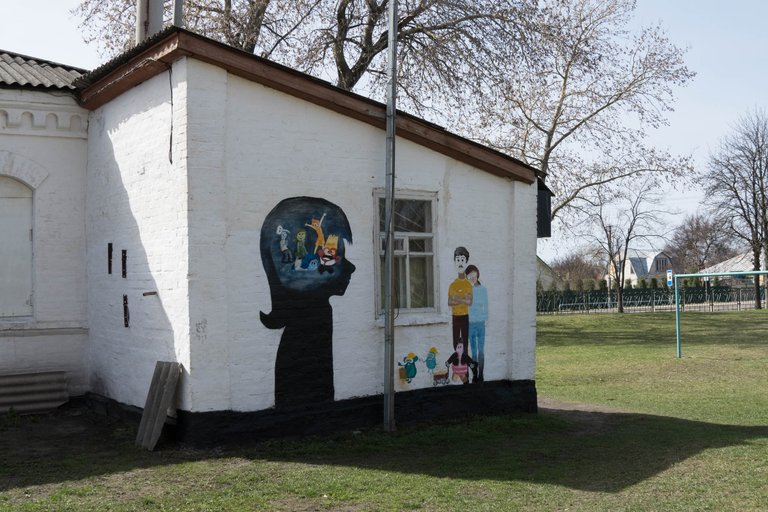
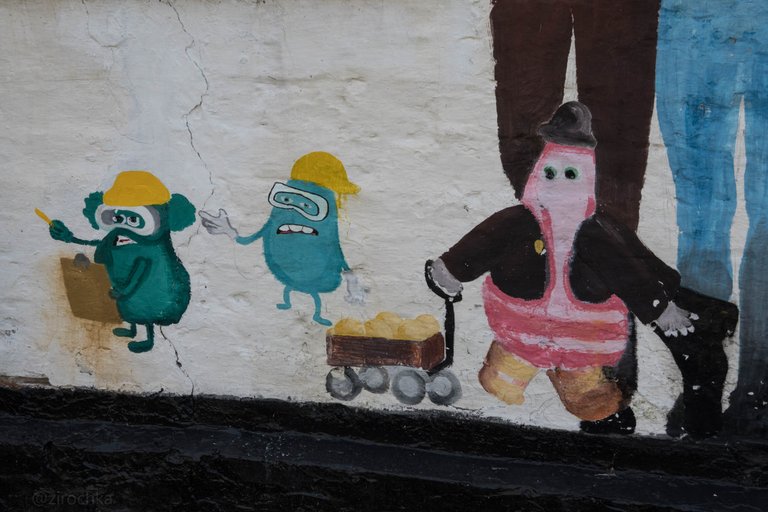
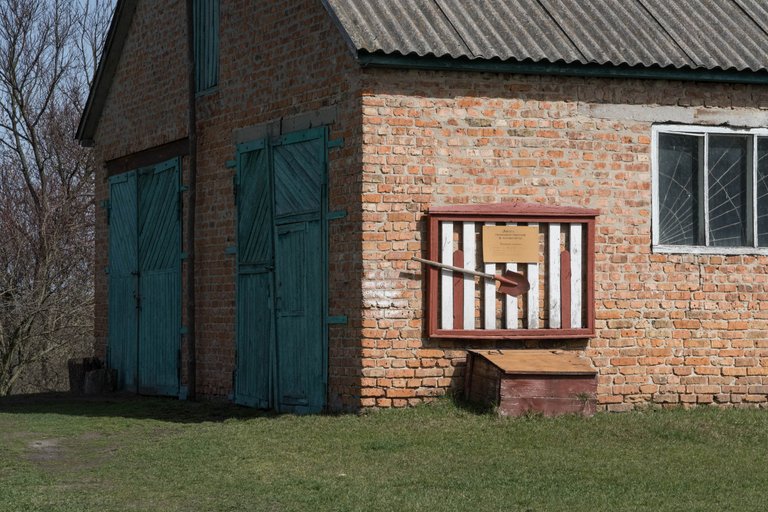
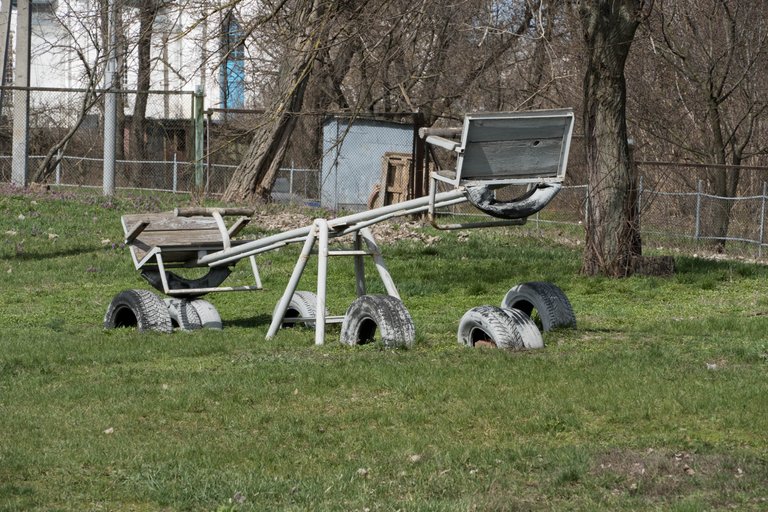
Nearby there is a large green playground with such a funny swing.
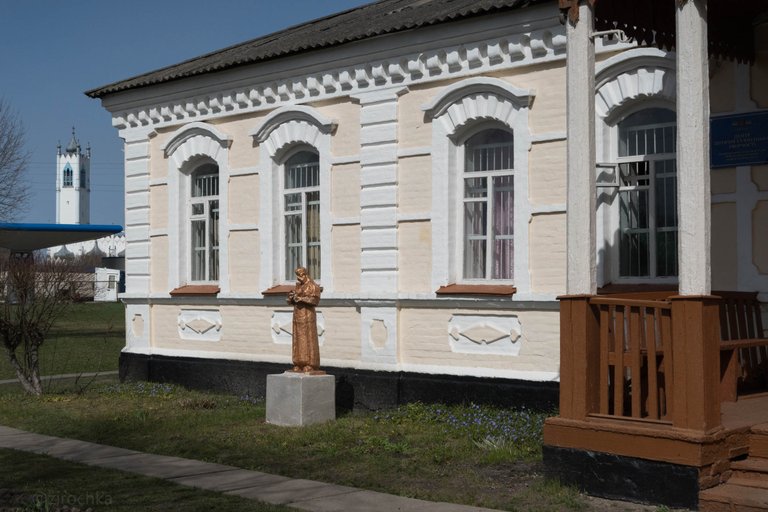
The first ship
Did you notice the small statue in front of the building in the photo above? This is a local blacksmith who built a steam engine for the first steamer.
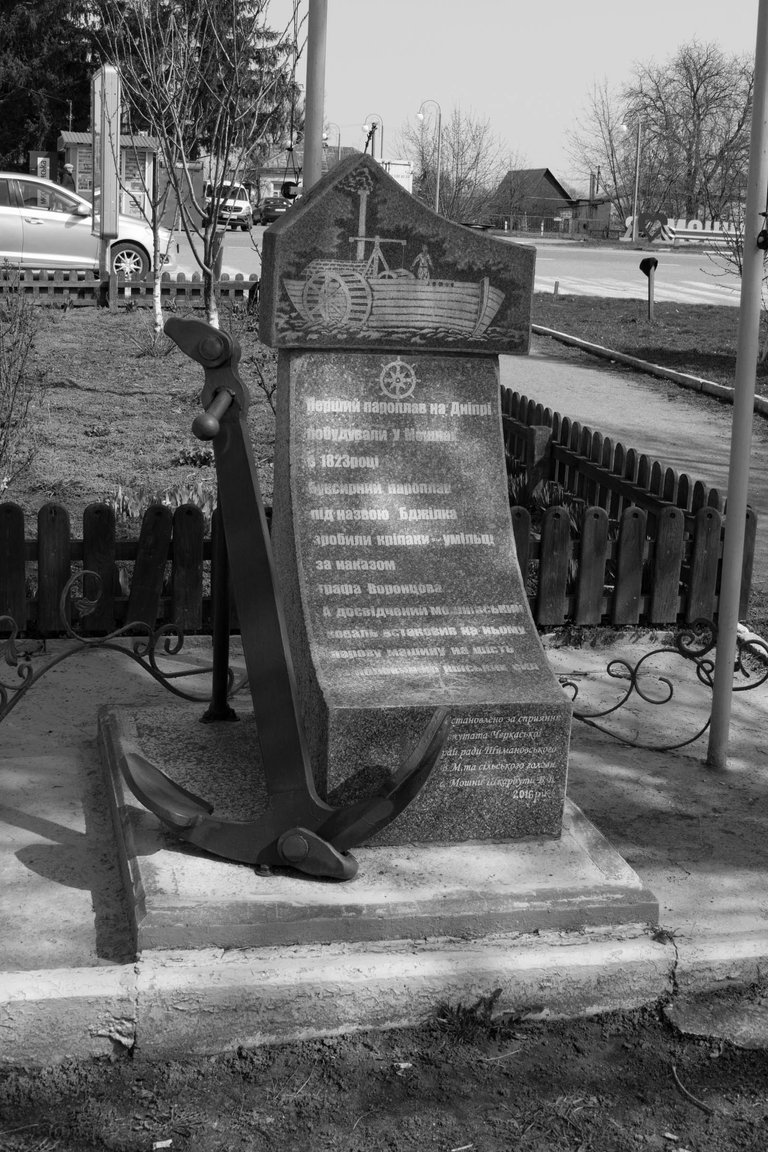
"The first steamer on the Dnipro River was built in Moshny in 1823. The towing steamer called "Pchelka" ("Bee") was made by serfs-artisans by order of Count Vorontsov. And an experienced blacksmith from Moshny installed a six and a half horsepower steam engine on it."
This small monument to memorise this extraodinary event is installed at the Market Square.
Indeed, a steamship on the Dnipro was born in Moshny at the expense of Count Vorontsov. The ship was built by the efforts of two German mechanics and a local blacksmith named Vernyhora. This name literally means "The one who can move mountains". 💪 The next steamship "Nadia" ("Hope") was also built at the Moshny Shipyard. It went to Odessa, that is all the way to the Black Sea.
Previously, the Dnipro was the most important local communication route. Local newspapers announced the start of navigation every spring as a holiday. Now nothing remains of this colossal transport industry.

What intelligent and talented people lived in this beautiful land!
Zemsky Bank
It is not listed among other local landmarks. But I spotted it and took a picture. This house looks ordinary at a glance but look at its entrance. Columns! Later it turned out that my intuition didn't let me down.
My husband and I learned its sad story from the princip of the Shevchenko Museum. The photo shows that the left half of the building was well preserved, while the right half began to collapse. The left half is privately owned and the right is owned by the state. This is sad.
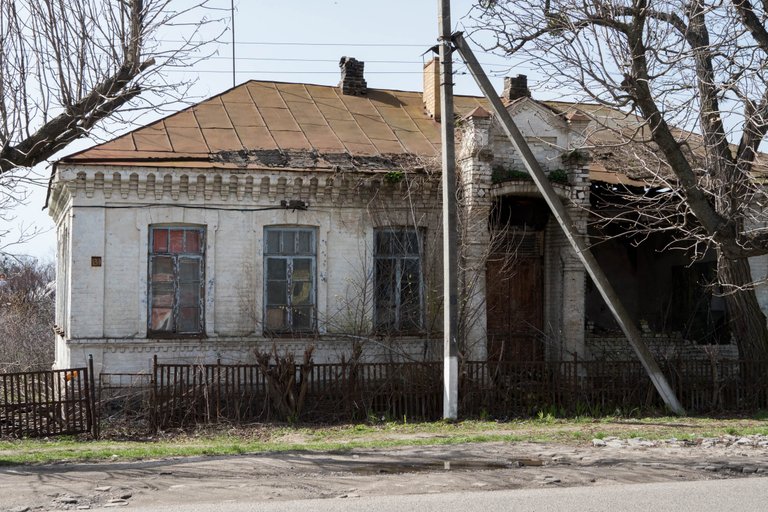

I took a couple of photos of the surroundings.
An old well by the street.
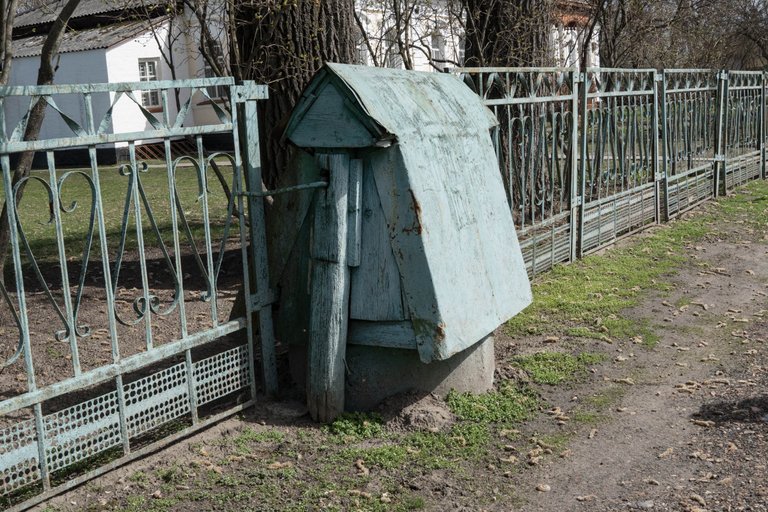 | 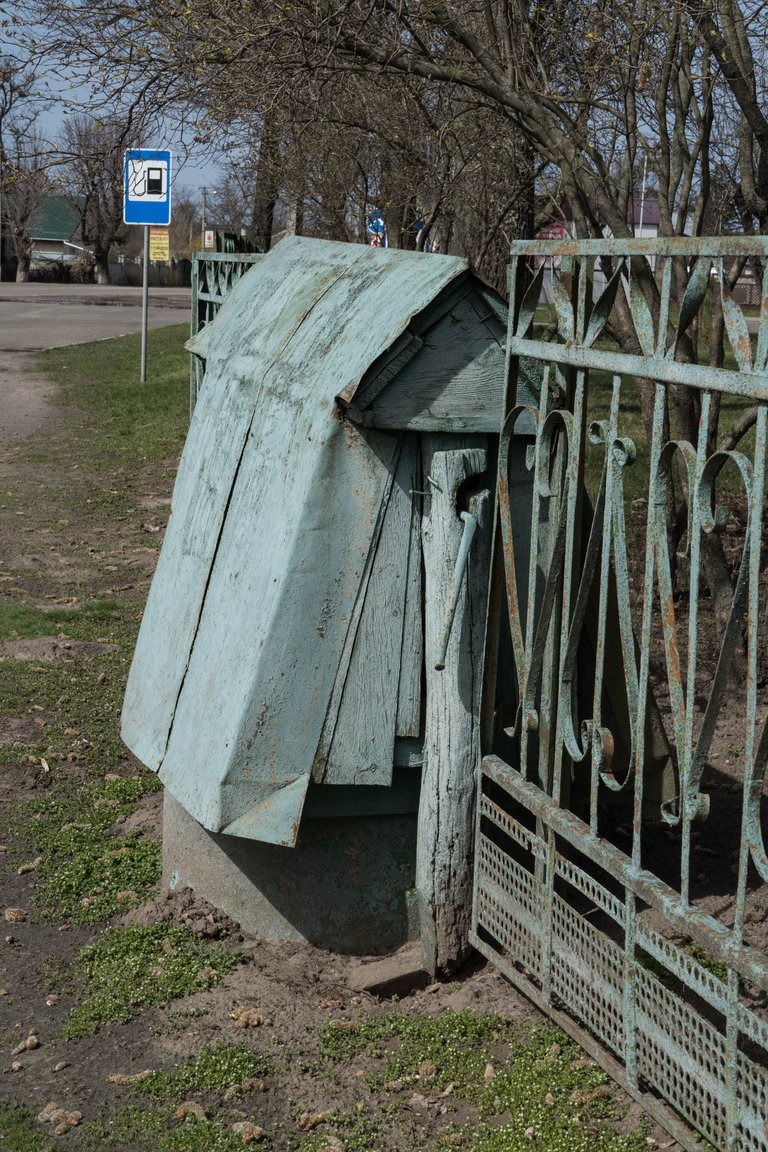 |
|---|
In old times, digging a well was quite expensive, too expensive for an average family. Therefore, it was done using crowdfunding and used jointly by all residents of the district.
The next house looks like nothing special but look closer at this fascinating veranda. ❤

It's so cute.
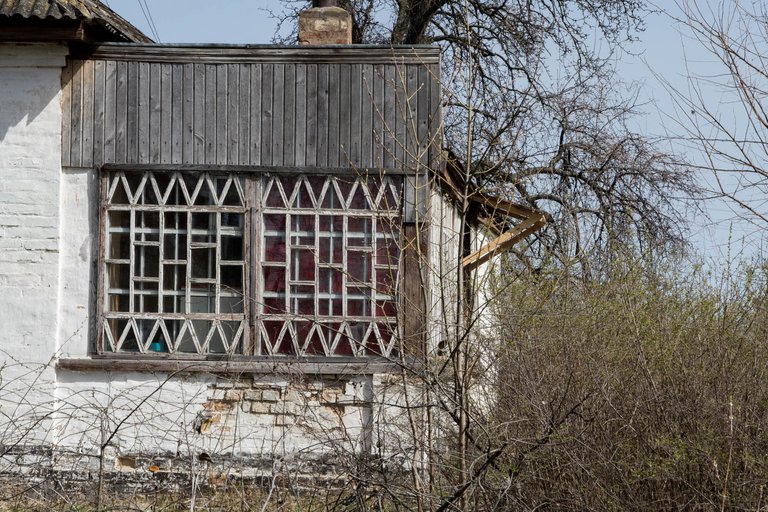

I did not show you the three remaining buildings but I would like to dedicate a separate post to them as I have so much to share about them.
Also, you didn't see the pictures of the luxurious Vorontsov's palace. This is because it was completely looted by the Bolsheviks and local tramps in 1920. After that, the whole complex was destroyed to the ground to hide the traces of the crimes. You know the script, huh? The beautiful park was no longer looked after, and it turned into a forest again. The only monument that reminds of the grand past of the palace and park is the lonely 10-meter obelisk erected by Countessa Elizaveta at the place where her daughter Sofia fell from a horse. We didn't get there.
In addition to the above-mentioned churches, in the 18th and 19th centuries there were two more Orthodox churches and two synagogues in Moshny. They also did not survive.

This is all for now. Hope you enjoyed the story.
Stay tuned to hear the continuation!
All pictures in this post is taken by me and can't be used without my consent.



